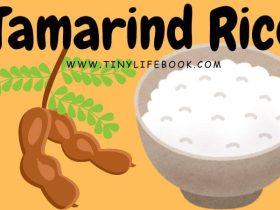National Croissant Day is a pleasant occasion celebrated every year on January 30th. It pays tribute to the croissant’s long history and enduring appeal. The croissant is a pastry known for its flaky layers and buttery flavor. Although the croissant is frequently linked to France, its roots are in Austria; thus, its rise to international renown is as complicated as its delicate dough.
History And Origins
The croissant, known as kipferl and available in a variety of shapes, most likely originated in Austria in the 13th century. Since the 19th century, there have been persistent and widespread culinary stories about the creation of the Kipferl and, later, the croissant. Some Egyptians even assert that the kipferl is modeled after the Ancient Egyptian flaky, layered pastry known as feteer meshaltet.
Whatever its origins, the croissant was sufficiently well-known by 1869 to be considered a morning mainstay. Charles Dickens also described “the soldier’s pain de munition, to the dainty croissant on the boudoir table, and the workman’s pain de ménage” in 1872.
National Croissant Day: Variations
Even while the traditional buttery croissant is a global favorite, there are other regional varieties that have been modified to accommodate various palates and cultural preferences.
1. Pain au Chocolat

A popular French delicacy constructed from the same laminated dough as a croissant but filled with dark chocolate, the pain au chocolat (literally, “bread with chocolate”) is a near relative of the croissant. A little richer flavor and texture are produced when the dough is rolled around the chocolate bars. This version, which is frequently served as a sweet breakfast or snack, has gained popularity outside of France as well.
2. Almond Croissant (Croissant aux Amandes)

In many bakeries, especially in France, the almond croissant is a favorite. Once the croissant is prepared, it is cut open, filled with frangipane (a sweet almond paste) or almond cream, and then topped with sliced almonds before being covered with sugar glaze. Rich and luscious, this delectable croissant is ideal for anyone with a sweet craving.
3. Croissant Suisse

The croissant suisse, or Swiss croissant, is a type of almond croissant that is filled with pastry cream or custard and frequently has fruit like raspberries or cherries on top. When served with a café au lait in the morning, this croissant variation is a favorite at French cafés.
4. Pain aux raisins

This kind of croissant has almond cream or custard as a filling, or it has raisins. You can eat this sweet, flaky pastry by itself or with a hot cup of tea or coffee. It’s a satisfying snack because of the variety of fillings.
5. Croissants Around the World

Although the croissant is still associated with French pastry, bakers around the world have begun to adapt it to their own tastes. For instance, croissants are frequently used to build sandwiches in the US, loaded with cheese. With fillings like matcha, red bean paste, or sweet custard, croissants have been modified to suit regional preferences throughout Asia.
Honoring National Croissant Day!
Enjoying this popular delicacy and learning about its rich history is made possible by National Croissant Day. Here are a few ideas for celebrating:
- Visit a local bakery: Buy freshly baked croissants to support neighborhood businesses. On this day, a lot of bakeries provide special discounts or unusual flavors.
- Bake at Home: Making croissants from scratch can be a satisfying undertaking for people who enjoy baking. To help you create the ideal flaky layers, there are a ton of recipes and instructions available.
- Examine Variations: To discover the pastry’s adaptability, try a variety of croissants, including savory, chocolate, strawberry, apple and almond varieties.
- Discover the History: Take a closer look at the croissant’s beginnings and its path from Austria to France. Gaining knowledge about its history will help you enjoy this pastry more.
Follow Us: Facebook | Instagram | Twitter | Pinterest













Leave a Reply